Parvo kills dozens of pups in Michigan

Despite initially screening negative for the highly contagious disease, affected dogs were later found to have canine parvovirus. As many as 60 unvaccinated dogs in northern Michigan have died of parvovirus in recent weeks, the Michigan Department of Agriculture and Rural Development (MDARD) reports. Concerns surrounding incidents of a mysterious “parvo-like” illness were fist shared by the department earlier this month. Experts were initially challenged after dogs with symptoms of the disease (i.e. vomiting, bloody diarrhea, lethargy, loss of appetite) tested negative for parvo during initial screening by veterinarians, the Michigan State University Veterinary Diagnostic Laboratory (MSU VDL) says. “This situation is complex because, although the dogs displayed clinical signs suggestive of parvovirus, they consistently test negative by point-of-care tests performed in clinics and shelters,” says the lab’s director Kim Dodd, DVM. “While those tests are valuable in the clinical setting, they are not as sensitive as the diagnostic tests we can perform here in the laboratory,” she adds. “We continue to further characterize the virus in hopes of better understanding why those animals were testing negative on screening tests.” The affected dogs do not have a history of complete vaccination, MDARD reports. “Dogs that are not fully vaccinated against this virus are the most at risk,” says Michigan State veterinarian, Nora Wineland, DVM. “Dog owners across Michigan must work closely with their veterinarians to ensure their dogs are appropriately vaccinated and given timely boosters to keep their pets safe and healthy. Protecting Michigan’s dogs is a team effort.” Veterinarians are encouraged to inform pet owners that canine parvovirus is not contagious to people or other species of domestic animals. Source: Veterinay Practice News Image: Veterinary Practice News
Lyme and other tick-borne diseases are on the rise. But why?

The complex interplay of ticks, their habitats and hosts — along with changes in land use and climate — may be enabling the spread of the pathogens they carry On a warm spring day, disease ecologist Daniel Salkeld is hiking the hills of coastal scrub and chaparral of Marin County, north of San Francisco. It’s his favorite spot to collect ticks. As he walks, he trails a white flannel blanket attached to a pole, and every 20 meters, he stops, scrutinizes the flannel and picks off any ticks that have latched on. Ticks are passive predators of blood — they wait for an unsuspecting mouse, deer or person to brush past the blade of grass they are clinging to. And luckily for the scientists who track them, they are easily fooled by wool fabric. Salkeld tallies his haul as he walks and carefully places the ticks in vials for further examination back in his laboratory at Colorado State University. He is curious to know what areas in California are high risk or low risk for tick-borne diseases. Even when his tick count for the day is zero, “that’s a useful insight,” he says. Elsewhere in North America and internationally, blanket-dragging tick biologists like him are uncovering an unsettling trend: Many tick species are expanding their ranges, swelling in number and picking up new pathogens that can deliver disease to people should a tick latch on and bite. That’s reason to worry, because ticks are prodigious vectors — they bring more types of pathogens over to people from animals than any other creature. And they’re on the march. In the United States, the annual number of cases of six tick-borne diseases has roughly doubled since 2004, with most of the increase dominated by Lyme disease cases. From a public health perspective, it’s important to know when ticks have spread to new places, says Rebecca Eisen, a research biologist focused on vector-borne bacterial diseases with the Centers for Disease Control and Prevention. “We want to make sure that people are aware that there is a risk that maybe they didn’t have as they were growing up in these communities,” she says. [Source: Know Able Magazine] [Image: DANIEL SALKELD]
New indications approved by FDA for topical treatment of tick infestation in cats
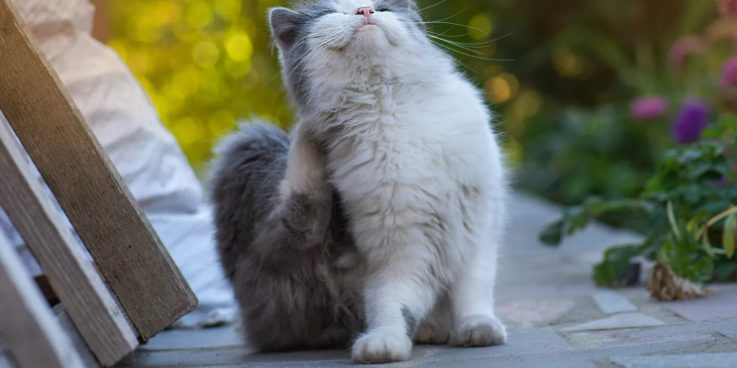
Both fluralaner topical solution (Bravecto) and fluralaner and moxidectin topical solution (Bravecto Plus) are now indicated for the treatment and control of Asian longhorned tick infestations in cats. Merck Animal Health has announced the new label indication for both fluralaner topical solution (Bravecto) and fluralaner and moxidectin topical solution (Bravecto Plus) for the treatment and control of Asian longhorned tick infestations in cats. Both products are the first US products labeled for both the treatment and control of Asian longhorned tick infestations. The Asian longhorned tick is an invasive ixodid tick that is native to Japan, China, eastern Russia, and Korea. As of December 2021, the species has been located across more than a third of the United States, according to Merck. These ticks have the potential to quickly become an important tick species within pet populations and are known for carrying various viral, bacterial, and protozoal agents. “We’re committed to protecting pets and pet owners alike from parasites that pose risks to both animal and human health. With the new indication [for these products], we can expand our ability to care for pets by offering an even broader range of parasite protection for cats,” said Dominique Sims, DVM, associate director, scientific affairs, Merck Animal Health, in an organizational release. “Veterinarians can now recommend a treatment option that provides more versatile protection than traditional flea and tick offerings, while giving cat owners peace of mind in knowing their pet is safe from infestations.” Merck’s fluralaner topical solution for cats was previously indicated for treatment and prevention of flea infestations, treatment and control of black-legged ticks and Asian longhorned tick infestations for 12 weeks, and treatment and control of American dog tick infestations for 8 weeks. Additionally, the fluralaner and moxidectin topical solution is also indicated for prevention of heartworm, treatment of infections with intestinal roundworm and hookworm, the ability to kill adult fleas, the treatment and prevention of flea infestations for 2 months, and treatment and control of black-legged tick infestations, American dog ticks, and Asian longhorned ticks for 2 months. Reference US FDA approves new indication for Merck Animal Health’s Bravecto (fluralaner topical solution) for cats and Bravecto Plus (fluralaner and moxidectin topical solution) for Cats. News release. September 6, 2022. Accessed September 8, 2022. https://www.merck-animal-health-usa.com/newsroom/fda-approves-new-indication-for-bravecto Source: dvm360.com Image Credit: lesichkadesign/Adobe Stock
BVA calls for extra vigilance and stricter pet import measures after first confirmed dog-to-human case of Brucella canis in the UK
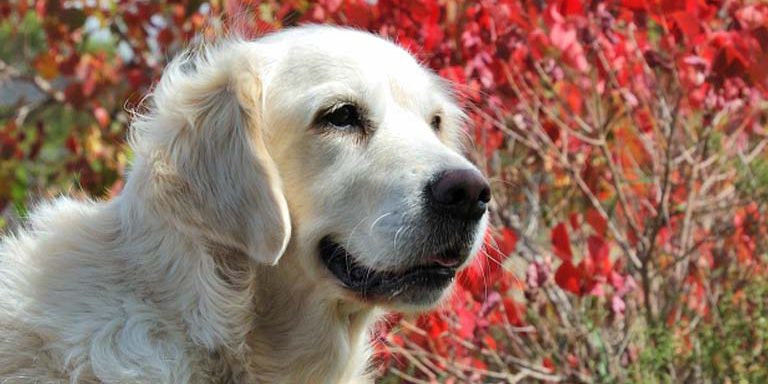
BVA has issued advice for vet teams and members of the public following confirmation of spread of infection from an imported rescue dog to the foster carer and her pets. We have issued a strong reminder to members of the public about the serious disease risks from importing dogs from abroad and are urging all prospective dog owners to protect the health of dogs and humans in the UK by rehoming dogs from within the country instead. BVA is also asking vet teams to take extra precautions and for the Government to tighten pet import rules. The advice follows news earlier this month about a positive Brucella canis test in a rescue dog imported from Belarus in March this year. The woman fostering the dog was hospitalised after coming into close contact with it, in the UK’s first confirmed dog-to-human transmission of this zoonotic disease. The foster animal and four pet dogs who were exposed to the disease, three of whom also tested positive, all had to be euthanised. Data released by the Government shows a steep rise in confirmed Brucella canis cases since the start of 2020, rising from just three before that year to 107 till July this year. The dogs were all either imported, had returned from holiday overseas, or been bred with an imported dog. BVA President Justine Shotton said: “This recent case of Brucella canis in a foster dog is extremely tragic and highlights why vets have long raised concerns over the real and serious risks of importing ‘Trojan’ rescue dogs with unknown health histories into the UK. “We know there is an added public health risk too, including for veterinary teams who treat and handle these animals, from contact with an infected dog’s contaminated body tissues and fluids. “BVA continues to call on the Government to take urgent action to introduce stricter pet import measures, including mandatory pre-import testing, so we can minimise the spread of Brucella canis and other emerging diseases. We are also calling for the strengthening of enforcement provisions and checks on dogs brought into the country through the commercial route.” Read more. Source: British Veterinary Association (BVA) Image: BVA
Veterinary Molecular Diagnostics Market projected to grow at a CAGR of 6.84% between 2022 and 2032 – Future Market Insights, Inc.

The Veterinary Molecular Diagnostics Market in the US is expected to accumulate the highest market share of 34.6% in 2022. The Veterinary Molecular Diagnostics market in Germany is expected to accumulate a market share of 9.7% in 2022, and is expected to continue to maintain the trend over the forecast period as well NEWARK, Del, Sept. 19, 2022 (GLOBE NEWSWIRE) — The global Veterinary Molecular Diagnostics market size is expected to be valued at US$ 182.1 Million in 2022. With the adoption of multiple testing panels, coupled with the growing consolidation in the veterinary diagnostics industry, the overall demand for Veterinary Molecular Diagnostics is projected to grow at a CAGR of 6.84% between 2022 and 2032, totaling around US$ 352.8 Million by 2032. Factors such as the growing pet animal population around the globe, increased animal health spending and advancements in veterinary molecular diagnostics are expected to propel the growth of the veterinary molecular diagnostics market over the analysis period. Developments in the animal farming sector and changing societal attitude toward pet animals have resulted in an increased demand for fast and reliable diagnostic techniques. Molecular diagnostics possess the potential to address this growing demand. Request Sample @ https://www.futuremarketinsights.com/reports/sample/rep-gb-6742 As of 2018, more than 60% of the US population owned a pet/companion animal. There is an increasing trend of treating pets as family members, which has increased the healthcare demands for veterinary applications. The increasing pet population is one of the reasons for the rising health expenditure on animals, globally. As per the estimates of the American Pet Products Association, the total American pet industry expenditure is expected to reach USD 75.38 billion by end 2019, up from USD 72.56 billion in 2018. The rise in animal health expenditure is expected to drive the growth of the veterinary molecular diagnostics market, as a significant portion of pet owners are expected to use advanced diagnostic modalities for animals, for various disease conditions. Furthermore, there is an increase in the livestock population, owing to the huge demand for animal-derived products. This is expected to increase the demand for molecular diagnostic tests in the next coming years. The Veterinary Molecular Diagnostics Market in the US is expected to accumulate the highest market share of 34.6% in 2022. The United States is expected to dominate the market, attributed to factors, such as rising pet adoption and increasing per capita animal healthcare expenditure. In addition, the rise in the prevalence of various animal diseases and injuries is another major factor that is anticipated to fuel the market growth during the forecast period. The high growth in the number of veterinary practitioners and rise in income levels in developed economies is amongst the important factors intensifying the growth and demand of veterinary molecular diagnostics market. In addition, the increasing demand for pet insurance and growing animal health expenditure is also contributing to the growth in the global market during the forecast period. In addition, the increasing demand for animal-derived food products and rising incidence of animal zoonotic diseases are also enhancing the growth of the market. Likewise, the high growth in companion animal population is also lifting the market growth in the forthcoming years. Source: Future Market Insights Global and Consulting Pvt. Ltd.
American Association of Feline Practitioners/EveryCat Health Foundation 2022 FIP Diagnosis Guidelines
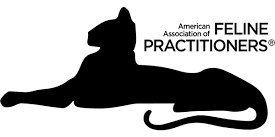
EveryCat Health Foundation and the American Association of Feline Practitioners (AAFP) released the 2022 AAFP/EveryCat Feline Infectious Peritonitis Diagnosis Guidelines to the veterinary community. Feline infectious peritonitis (FIP) is a viral disease that can affect any organ in the body, and it is caused by the feline coronavirus (FCoV). In publishing these Guidelines, the AAFP and EveryCat aim to provide veterinarians with the essential information necessary to provide a FIP diagnosis in cats. “First recognized over 50 years ago, feline infectious peritonitis has been one of the most important infectious diseases and causes of death in cats, especially affecting young cats less than two years old,” said Vicki Thayer, DVM, DABVP (Feline), Task Force Co-Chair. “Further, FIP can be challenging to diagnose in some cases and is often considered an enigma by the veterinary profession. Today, diagnosis relies upon evidence from signalment, history, physical examination findings, and diagnostic testing. The 2022 AAFP/EveryCat Feline Infectious Peritonitis Diagnosis Guidelines serve as a critical resource for veterinary practitioners diagnosing FIP in their cat patients.” Given the fact that FIP is fatal when untreated and nearly every small animal veterinary practitioner will see FIP cases, the ability to obtain a correct diagnosis is critical. FIP can be challenging to diagnose due to the lack of clinical signs or laboratory changes, especially when no physical symptoms are present. These Guidelines will provide veterinarians with essential information to assist their ability to recognize cats presenting with FIP. “These Guidelines were written with the intent of providing the most current knowledge available in one comprehensive format combined with extensive supplemental resources all in one location,” adds Susan Gogolski, DVM, PMP, DABVP (Canine/Feline), Task Force Co-chair. “The Guidelines will be an invaluable resource to veterinary teams around the world as a clinician builds the index of suspicion of FIP brick by brick.” The Guidelines detail characteristics and pathogenesis of FIP, as well as numerous diagnostic testing factors to understand when testing for FIP. They offer the most current knowledge in an easy-to-read format and provide clear clinical images, diagrams, and tables to help the reader better understand and build a case for FIP. In addition, the Guidelines feature an extensive supplemental library of videos, figures, instructions, and a printable health questionnaire. 2022 Feline Infectious Peritonitis Diagnosis Guidelines Source: EveryCAT.org
Sudden spike in rabies cases a cause of concern for India
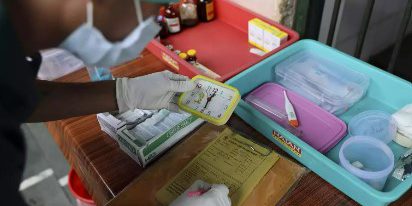
In India, dogs are responsible for about 97 per cent of human rabies, followed by cats (2 per cent), jackals, mongoose and others (1 per cent). The disease is endemic throughout the country. It infects the central nervous system, ultimately affecting the brain and resulting in death. The time lag between the bite to rabies and onset of symptoms of the disease, is usually about a few days to few months in humans, depending on the site and severity of exposure. Rabies is one of the oldest recognized Zoonotic diseases with almost hundred per cent fatality and has evolved as an important public health concern worldwide. According to some studies, around 174 lakh persons are bitten annually worldwide and more than 55,000 people die annually of the disease. The sudden rise in cases of dog bits in India has become a cause of concern for all. One incident of a pet dog biting a minor boy inside the lift of a society of in Ghaziabad was a shocker and compelled everyone to think about random dog bites and steps to prevent it. According to available data, India reported total 72,77,523 cases of animal bites in 2019, which dropped to 46,33,493 in 2020 and 17,01,133 a year later. The first seven months of 2022, however, recorded more than 14.5 lakh cases. The national guidelines for rabies say that it is an acute viral disease that causes fatal encephalomyelitis in virtual all the warm-blooded animals including humans. The virus is found in wild and some domestic animals and is transmitted to other animals and to humans through their saliva. Read more.
What spiking US veterinary prices reveal about inflation
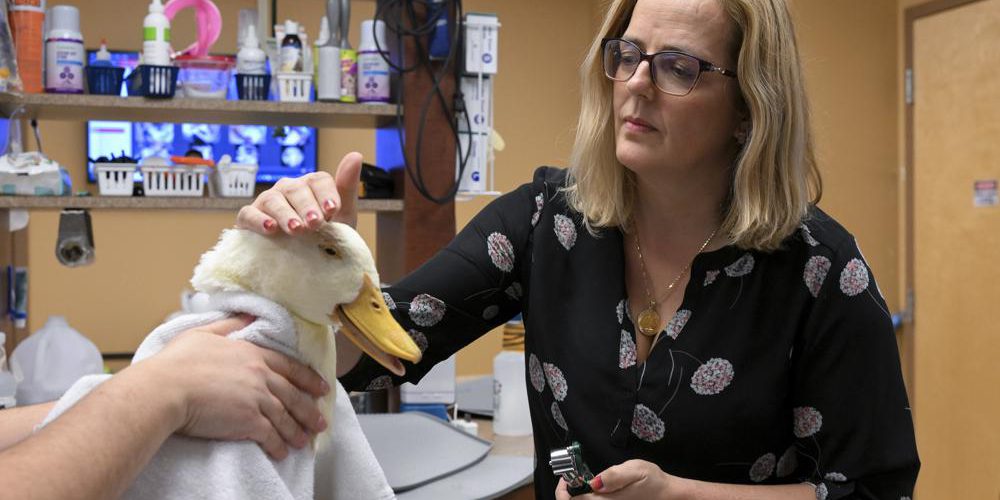
WASHINGTON (AP) — Most pets hate visiting the vet. Now it’s becoming a lot more unpleasant for their owners, too. America’s worst bout of inflation in four decades has swollen the cost of your dog or cat’s visit to the animal doctor. Prices for vet services have jumped 10% in the past year, government data shows — the biggest such spike on records dating back two decades. The surging cost of veterinary services illustrates how high inflation has spread well beyond physical goods, such as cars, that became scarce as the economy accelerated out of the pandemic recession, to numerous services of which pet care is one example. The trend has stoked fears that inflation is growing more entrenched and that the Federal Reserve will feel compelled to keep raising interest rates at an ever-higher risk of causing a recession. From dental care and apartment rents to auto repairs and hotel rates, prices for services keep going up. Such inflation is especially hard to quell, because it’s driven mainly by a tight labor market and consumer demand, which won’t likely cool unless the economy slows drastically or sinks into a recession. The cost of housing is the biggest driver of higher services prices. But even excluding rents, services prices rose 7.4% in August from a year ago. Source: AP News
The Veterinary Pharmaceuticals Market Sees A Rise In Use Of Nanotechnology To Tackle Antibiotic Resistance : The Business Research Company

The reports have been updated with the most recent Ukraine-Russia War impact on market growth for all 27+ industries. The reports also provide possible solutions and opportunities for surviving this crisis. LONDON, Oct. 19, 2022 /PRNewswire/ — To tackle antibiotic resistance, nanotechnology is increasingly gaining traction in the veterinary pharmaceutical market as a substitute for veterinary antibiotics. Nanotechnology is the study of the control of matter on an atomic and molecular scale. In the veterinary pharmaceutical industry, nanotechnology is used to improve diagnosis, treatment, animal growth promotion, and production. Nanoparticles are mainly used as alternative antimicrobial agents to reduce the use of antibiotics and improve the detection of pathogenic bacteria. They are also used as drug delivery agents for new drugs and vaccine candidates to improve their characteristics and performance, and to reduce drug resistance in animal organisms. The global veterinary pharmaceuticals market grew from $21.98 billion in 2021 to $23.99 billion in 2022 at a compound annual growth rate (CAGR) of 9.1%. The Russia–Ukraine war disrupted the chances of global economic recovery from the COVID-19 pandemic, at least in the short term. The war between these two countries has led to economic sanctions on multiple countries, surge in commodity prices, and supply chain disruptions, effecting many markets across the globe. The global veterinary pharmaceuticals market growth is expected to reach $29.49 billion in 2026 at a CAGR of 5.3%. Request a free sample of the Veterinary Pharmaceuticals Market Report North America Was The Largest Region In The Veterinary Pharmaceuticals Market North America was the largest region in the veterinary pharmaceuticals market and was worth $12.54 billion in 2021. According to veterinary pharmaceuticals industry analysis, the veterinary pharmaceuticals market in North America is supported by the presence of a large pet and cattle population, high animal healthcare expenditure, and by the high prevalence of animal diseases in countries such as the USA and Canada. For instance, in Canada, there were 8.2 million dogs, and 8.3 million cats in 2018. Zoetis Inc Held The Largest Veterinary Pharmaceuticals Market Share In 2021 Zoetis Inc was the largest competitor in the veterinary pharmaceuticals market in 2021, with a 19.26% share of the market. Zoetis is an animal healthcare company, involved in discovering, developing, manufacturing and commercializing animal health medicines, vaccines and diagnostic products. Read more.
Congratulations! Bioguard animal health diagnostic center is accredited for ISO 17025
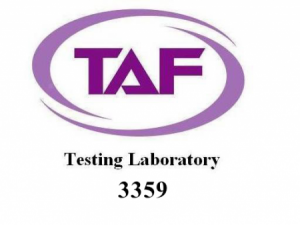
Bioguard animal health diagnostic center is accredited for ISO 17025
